WOMEN WITH GRITT: O&M FOUNDER JOSE BRYCE SMITH ON LAUNCHING A CLEAN BRAND, FEELING LIKE LEGALLY BLONDE IN THE BOARDROOM & WHY SHE ISN’T AFRAID TO FAIL
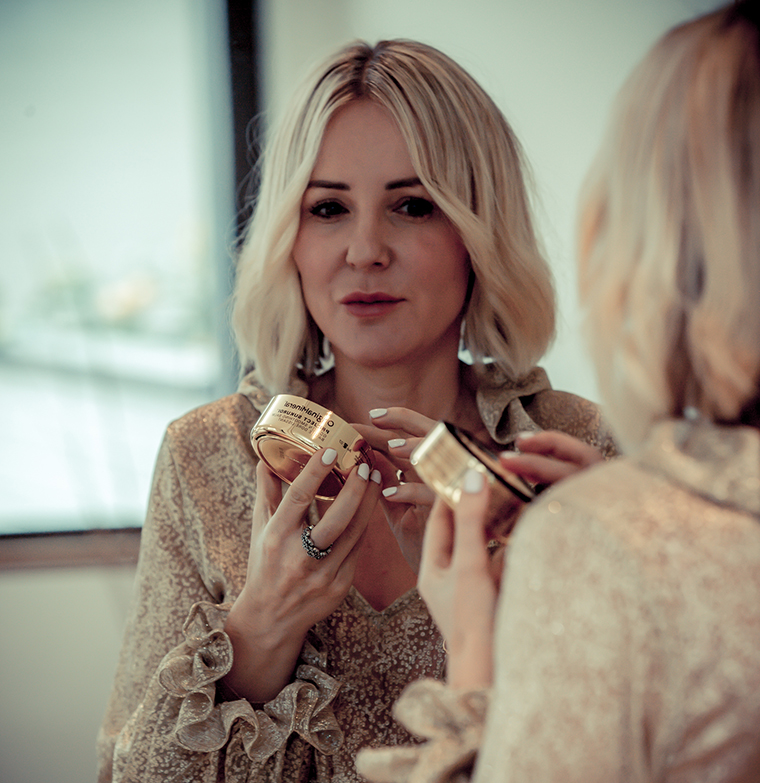
”We came across a lot of criticism. A lot of people told me that I didn’t know what I was doing and to be honest, I didn’t, really. They were probably right.”
Welcome to Women with GRITT: a series where we interview the resilient, hardworking women who have kicked in the glass ceiling and inspire us to do the same.

When Jose Bryce Smith founded haircare brand Original & Mineral — better known as O&M — over 10 years ago, she was way ahead of her time. Bryce Smith was (and still is!) passionate about creating top quality hair colour and styling products that were completely free from ammonia and other questionable chemicals.
In 2020, more and more consumers are questioning what goes into their beauty products and deliberately seek out ‘low tox’ options. When Bryce Smith was launching O&M, however, the market was different. In short, she had to really state her case.
In this interview, Bryce Smith speaks to Gritty Pretty about developing a strong sense of resilience as a child, launching a hair salon in Sydney (and calling the Beauty Editor at Vogue Australia every day until she came in) and why she’s okay with feeling like Elle Woods from Legally Blonde in the boardroom.
Jose, hi! Before we talk a bit more about how you built O&M from the ground up, we’d love to learn more about you. Where did you grow up and what was your childhood like?
I grew up in England, between London and Cambridge, in the home counties. I had a pony named Mel. My friends used to call me Gymkhana Josie. [Laughs]
My father got cancer when he was 35 and that was quite pivotal in my childhood. He died when he was 45. He never complained about it and we didn’t know a huge amount [about how he was feeling] but we watched him go through that. I think that was pivotal in setting me up for my life. I learned a lot about resilience from that experience.
After school, I went to university in Leeds which was really fun. Then I worked in London for about four years in media before coming to Sydney in 2000.
How old were you when you relocated to Australia and what was the catalyst behind that move?
It was a crazy move. I grew up watching Home & Away and Neighbours and always loved Australia. I was working at a publishing house in London and I was going to a hair salon next door to get my hair done that had ammonia-free hair colour [because] my mum always told me to use natural products and stay away from chemicals. It turned out that my usual hairdresser was away so another guy did my hair. His name was Allen and it turned out that we lived next door to each other. We became friends and then he became my boyfriend. He was Australian and told me he was going back to Australia to open a hair salon and asked if I wanted to come for a holiday. That was what brought me to Australia 20 years ago. I’m one of those English people that moved to Sydney and never went back. Allen was my boyfriend and then business partner — now he’s my ex-husband and the father of my children. We’ve been on quite a journey together.
Prior to launching O&M, you co-founded an ammonia-free hair salon in Paddington, Sydney and managed its operations for eight years. Why were you so passionate about giving customers the option of dying their hair with ammonia-free colour?
Allen and I founded Atlantis Hair [and] we were there for 12 years. I’d never worked in hairdressing before so I started on reception. I think it’s the hardest job I’ve ever done. Managing all those people and clients is pretty crazy, you have to be so organised. Plus, hairdressers are very right brained creatives — there’s a lot of emotion.
[When we moved to Australia] Allen developed very bad contact dermatitis. It started because he’d been using ammonia-free hair colour in London and there was nothing like it here. Then his skin really flared up. That’s when I started to think that there had to be a better way. I was genuinely concerned about the health of our hairdressers and clients. That’s what made us seek out a hair color in the UK that was ammonia-free; before creating O&M, we got that [already existing brand] in the salon because we thought it was a safer alternative and kept it to ourselves for eight years.
Your salon only stocked ammonia-free hair dyes and products that were free from questionable chemicals. Was it hard to convince new customers to give ‘low tox’ hair colour a go?
Do you remember Caroline Paidasch who was the original Beauty Editor of Vogue Australia? When we first started [Atlantis Hair] we had Allen, Wayne who had worked at Antony Whitaker and Joh Bailey — they arrived [from the UK] and there was no Instagram or Facebook so they had no clients. They thought that they were going to open the doors and that people would rush in [but they didn’t]. So when I started working there, I started to ring Caroline Paidasch every day and say, ‘You have to come into my salon — I’ve got these hairdressers from London and this colour from London.’ She’d say to me, ‘Oh, no, I have my own hairdresser that I’ve been with for 10 years.’ And then she said to me, ‘Are you going to ring me every day?’ I replied, ‘Actually, yeah, I am.’
[Caroline] ended up coming in. I remember we had no clients that day so we got Allen’s mother to come in with a good shoe and a good handbag and we put a colour in her hair. And then we got Wayne’s mum to come in and do the same. And then Caroline came in and they put a colour on her hair. [While this was happening] Wayne went outside and started ringing me and I was making fake appointments.
Then Caroline did this little write up in Vogue about the size of my finger in the beauty pages about hair colour. And then it just snowballed from there.
How did you transition from being a successful salon owner to launching your own hair care brand, O&M?
We kept [the brand we were importing from the UK] to ourselves for eight years and then I realised that we were distributing someone else’s brand who wasn’t particularly committed to marketing it or giving us any support. The brand was actually called Organic & Mineral. We decided to change the same to Original & Mineral because we were the original pioneers of this clean colour.
We came across a lot of criticism. A lot of people told me that I didn’t know what I was doing and to be honest, I didn’t, really. They were probably right. But we started packing it in the back of the salon. We were like a workshop. We were sending the product out — I was posting it at the post office and it was arriving crushed and people were complaining and then I was also doing the customer service… But we just carried on.
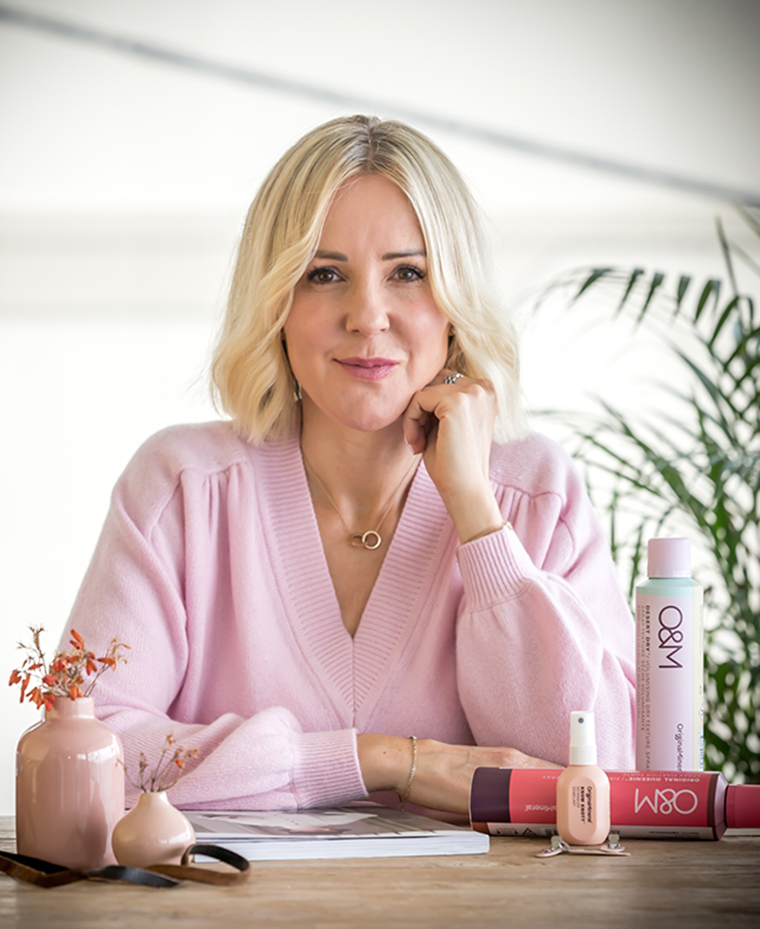
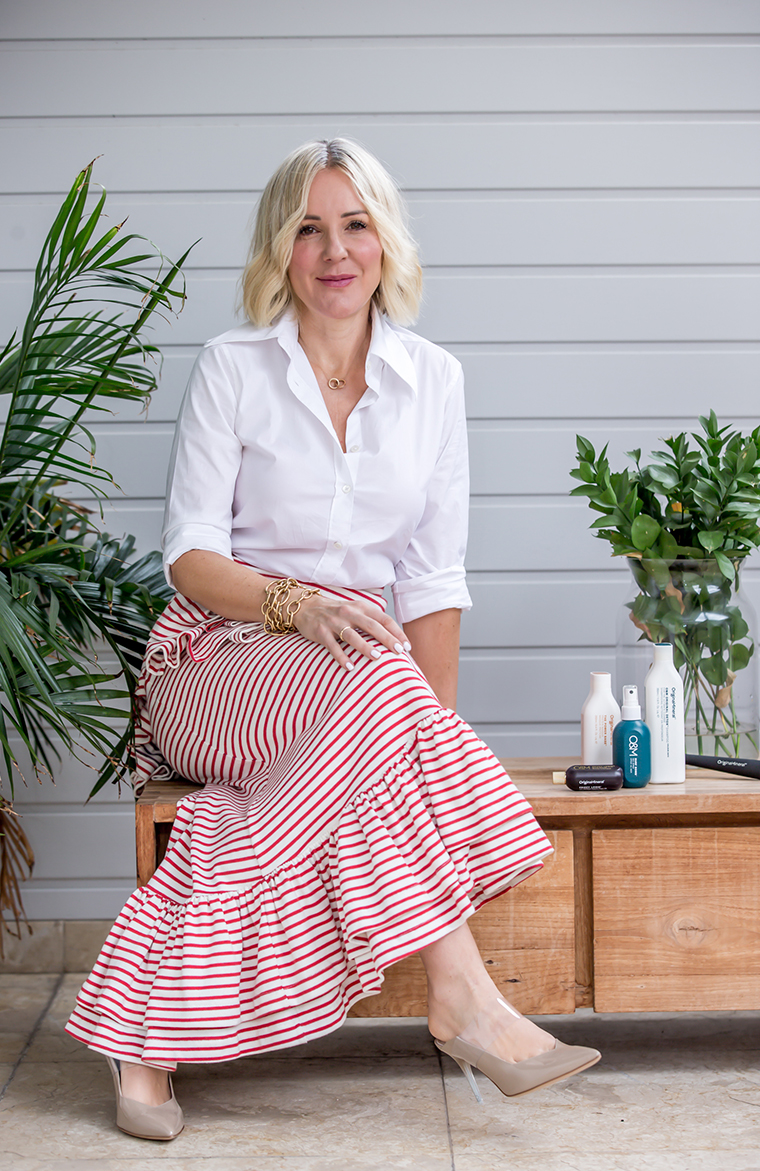
When you were creating O&M, what did you decide to focus on first — was it formulation, packaging, marketing? Or did you just dive it and wing it?
I think the formula is what came first. Over the years, we’ve evolved the formula; we’re now onto our third generation of hair colour because we’ve made a lot of improvements to it. I call it ‘the goo in the tube’. Packaging is great but if ‘the good in the tube’ doesn’t give you the result that you’re looking for, the packaging is not going to compensate for that.
If I was starting again, I would ask, ‘What’s your philosophy? What’s great about the products? What’s your point of difference? What do you love?’ And then I think the packaging is a reflection of that.
At the time [when we were starting out] any sulphate-free shampoos were in health food stores. And any low chemical hair colour was either a) not performing or b) green and brown.
How have you found navigating the world of business as a woman?
It was about 12 years ago that we left the salon [to focus on O&M] and I was travelling the world on my own [speaking to manufacturers and investors]. Now, being a woman in business is something that is celebrated but back then, you were kind of an alien. You would think that hair care would be a female industry but a lot of the time, it’s run by men in suits. They would say to me, ‘Jose we love your idea, we love your brand, we think you’re a bit ahead of your time — but who owns the company?’ Initially, I would just say, ‘I do’, and I would go into a lot of justification to make them feel secure.
Then about four years ago — which was the most significant turning point in the company when I launched a new colour — I met a guy called Andrew on a dating app and we very quickly realised that we weren’t for dating. But he was a serial entrepreneur — a very lovely, very humble guy who has done it all before — and he said to me, ‘I’ve never met anyone with as much chutzpah as you in my life and you seem to be having a few problems, would you like me to help you?’ I said to him, ‘I’m going to see this distributor and I need him to buy a million dollars worth of product upfront — could you come and say something about how you’re on the board and tell them about the structure and the finances of the company?’ When we went into the meeting, he said exactly that and they signed the contract, giving me a million dollars for the product.
Afterwards, he said to me, ‘Jose that’s so unfair, I don’t know anything about your business’. I said, ‘Never mind about that — I’ve got about six of those, can you come again?’
Sometimes people ask me if I think that, in the boardroom, women would wear less makeup or let their hair go grey. I just think, we’ve got everything the men have got; we’ve got brains; we’ve got tenacity; we’ve got creativity; and we also have hair, makeup and style. Why wouldn’t we use it all? We can actually polarise a room. Often, I’ll walk into a room and sometimes I do look like an excerpt from Legally Blonde — I could wear something else but I’m more comfortable like this. When you’re in a room and you’re networking, you can also attract a lot of people to you by the way you look — why shouldn’t we use it?
In the last two years, the ‘clean beauty’ movement has really gained momentum with more and more brands choosing to formulate without the chemicals that could potentially have adverse side-effects (case in point: ammonia, phthalates, parabens). Being one of the original ‘clean beauty’ brands, have you seen an increased interest in O&M?
I see now that the clean movement is a way for people to understand [what goes into their beauty products]. But there are a lot of smoke and mirrors where [some brands] can put a few natural ingredients in and then make big claims.
For the past four years, to be honest, the business has exploded and if anything, we’re growing faster than we can possibly supply or afford to grow.
Obviously, business at O&M is booming however it’s been quite a journey to get here. How do you deal with challenges or failures that pop up along the way?
I watched a YouTube video where Denzel Washington gives a speech where he says, ‘Fail big, fail as much as you can.’
I’m still learning and the risks become higher but it’s all a journey. I’ve got a psychologist called Catherine who I go see every week — I call her my shrink. And she says to me, ‘Jose, the world is your classroom. You’re just learning. It’s all data.’ And I think that once you see it like that, you get less impacted. Now, when I see a problem coming, I actually get excited because my neuro association with solving that problem and the dopamine rush on the other side, is much bigger than the problem.
When Jose Bryce Smith founded haircare brand Original & Mineral — better known as O&M — over 10 years ago, she was way ahead of her time. Bryce Smith was (and still is!) passionate about creating top quality hair colour and styling products that were completely free from ammonia and other questionable chemicals.
In 2020, more and more consumers are questioning what goes into their beauty products and deliberately seek out ‘low tox’ options. When Bryce Smith was launching O&M, however, the market was different. In short, she had to really state her case.
In this interview, Bryce Smith speaks to Gritty Pretty about developing a strong sense of resilience as a child, launching a hair salon in Sydney (and calling the Beauty Editor at Vogue Australia every day until she came in) and why she’s okay with feeling like Elle Woods from Legally Blonde in the boardroom.
Jose, hi! Before we talk a bit more about how you built O&M from the ground up, we’d love to learn more about you. Where did you grow up and what was your childhood like?
I grew up in England, between London and Cambridge, in the home counties. I had a pony named Mel. My friends used to call me Gymkhana Josie. [Laughs]
My father got cancer when he was 35 and that was quite pivotal in my childhood. He died when he was 45. He never complained about it and we didn’t know a huge amount [about how he was feeling] but we watched him go through that. I think that was pivotal in setting me up for my life. I learned a lot about resilience from that experience.
After school, I went to university in Leeds which was really fun. Then I worked in London for about four years in media before coming to Sydney in 2000.
How old were you when you relocated to Australia and what was the catalyst behind that move?
It was a crazy move. I grew up watching Home & Away and Neighbours and always loved Australia. I was working at a publishing house in London and I was going to a hair salon next door to get my hair done that had ammonia-free hair colour [because] my mum always told me to use natural products and stay away from chemicals. It turned out that my usual hairdresser was away so another guy did my hair. His name was Allen and it turned out that we lived next door to each other. We became friends and then he became my boyfriend. He was Australian and told me he was going back to Australia to open a hair salon and asked if I wanted to come for a holiday. That was what brought me to Australia 20 years ago. I’m one of those English people that moved to Sydney and never went back. Allen was my boyfriend and then business partner — now he’s my ex-husband and the father of my children. We’ve been on quite a journey together.
Prior to launching O&M, you co-founded an ammonia-free hair salon in Paddington, Sydney and managed its operations for eight years. Why were you so passionate about giving customers the option of dying their hair with ammonia-free colour?
Allen and I founded Atlantis Hair [and] we were there for 12 years. I’d never worked in hairdressing before so I started on reception. I think it’s the hardest job I’ve ever done. Managing all those people and clients is pretty crazy, you have to be so organised. Plus, hairdressers are very right brained creatives — there’s a lot of emotion.
[When we moved to Australia] Allen developed very bad contact dermatitis. It started because he’d been using ammonia-free hair colour in London and there was nothing like it here. Then his skin really flared up. That’s when I started to think that there had to be a better way. I was genuinely concerned about the health of our hairdressers and clients. That’s what made us seek out a hair color in the UK that was ammonia-free; before creating O&M, we got that [already existing brand] in the salon because we thought it was a safer alternative and kept it to ourselves for eight years.
Your salon only stocked ammonia-free hair dyes and products that were free from questionable chemicals. Was it hard to convince new customers to give ‘low tox’ hair colour a go?
Do you remember Caroline Paidasch who was the original Beauty Editor of Vogue Australia? When we first started [Atlantis Hair] we had Allen, Wayne who had worked at Antony Whitaker and Joh Bailey — they arrived [from the UK] and there was no Instagram or Facebook so they had no clients. They thought that they were going to open the doors and that people would rush in [but they didn’t]. So when I started working there, I started to ring Caroline Paidasch every day and say, ‘You have to come into my salon — I’ve got these hairdressers from London and this colour from London.’ She’d say to me, ‘Oh, no, I have my own hairdresser that I’ve been with for 10 years.’ And then she said to me, ‘Are you going to ring me every day?’ I replied, ‘Actually, yeah, I am.’
[Caroline] ended up coming in. I remember we had no clients that day so we got Allen’s mother to come in with a good shoe and a good handbag and we put a colour in her hair. And then we got Wayne’s mum to come in and do the same. And then Caroline came in and they put a colour on her hair. [While this was happening] Wayne went outside and started ringing me and I was making fake appointments.
Then Caroline did this little write up in Vogue about the size of my finger in the beauty pages about hair colour. And then it just snowballed from there.
How did you transition from being a successful salon owner to launching your own hair care brand, O&M?
We kept [the brand we were importing from the UK] to ourselves for eight years and then I realised that we were distributing someone else’s brand who wasn’t particularly committed to marketing it or giving us any support. The brand was actually called Organic & Mineral. We decided to change the same to Original & Mineral because we were the original pioneers of this clean colour.
We came across a lot of criticism. A lot of people told me that I didn’t know what I was doing and to be honest, I didn’t, really. They were probably right. But we started packing it in the back of the salon. We were like a workshop. We were sending the product out — I was posting it at the post office and it was arriving crushed and people were complaining and then I was also doing the customer service… But we just carried on.


When you were creating O&M, what did you decide to focus on first — was it formulation, packaging, marketing? Or did you just dive it and wing it?
I think the formula is what came first. Over the years, we’ve evolved the formula; we’re now onto our third generation of hair colour because we’ve made a lot of improvements to it. I call it ‘the goo in the tube’. Packaging is great but if ‘the good in the tube’ doesn’t give you the result that you’re looking for, the packaging is not going to compensate for that.
If I was starting again, I would ask, ‘What’s your philosophy? What’s great about the products? What’s your point of difference? What do you love?’ And then I think the packaging is a reflection of that.
At the time [when we were starting out] any sulphate-free shampoos were in health food stores. And any low chemical hair colour was either a) not performing or b) green and brown.
How have you found navigating the world of business as a woman?
It was about 12 years ago that we left the salon [to focus on O&M] and I was travelling the world on my own [speaking to manufacturers and investors]. Now, being a woman in business is something that is celebrated but back then, you were kind of an alien. You would think that hair care would be a female industry but a lot of the time, it’s run by men in suits. They would say to me, ‘Jose we love your idea, we love your brand, we think you’re a bit ahead of your time — but who owns the company?’ Initially, I would just say, ‘I do’, and I would go into a lot of justification to make them feel secure.
Then about four years ago — which was the most significant turning point in the company when I launched a new colour — I met a guy called Andrew on a dating app and we very quickly realised that we weren’t for dating. But he was a serial entrepreneur — a very lovely, very humble guy who has done it all before — and he said to me, ‘I’ve never met anyone with as much chutzpah as you in my life and you seem to be having a few problems, would you like me to help you?’ I said to him, ‘I’m going to see this distributor and I need him to buy a million dollars worth of product upfront — could you come and say something about how you’re on the board and tell them about the structure and the finances of the company?’ When we went into the meeting, he said exactly that and they signed the contract, giving me a million dollars for the product.
Afterwards, he said to me, ‘Jose that’s so unfair, I don’t know anything about your business’. I said, ‘Never mind about that — I’ve got about six of those, can you come again?’
Sometimes people ask me if I think that, in the boardroom, women would wear less makeup or let their hair go grey. I just think, we’ve got everything the men have got; we’ve got brains; we’ve got tenacity; we’ve got creativity; and we also have hair, makeup and style. Why wouldn’t we use it all? We can actually polarise a room. Often, I’ll walk into a room and sometimes I do look like an excerpt from Legally Blonde — I could wear something else but I’m more comfortable like this. When you’re in a room and you’re networking, you can also attract a lot of people to you by the way you look — why shouldn’t we use it?
In the last two years, the ‘clean beauty’ movement has really gained momentum with more and more brands choosing to formulate without the chemicals that could potentially have adverse side-effects (case in point: ammonia, phthalates, parabens). Being one of the original ‘clean beauty’ brands, have you seen an increased interest in O&M?
I see now that the clean movement is a way for people to understand [what goes into their beauty products]. But there are a lot of smoke and mirrors where [some brands] can put a few natural ingredients in and then make big claims.
For the past four years, to be honest, the business has exploded and if anything, we’re growing faster than we can possibly supply or afford to grow.
Obviously, business at O&M is booming however it’s been quite a journey to get here. How do you deal with challenges or failures that pop up along the way?
I watched a YouTube video where Denzel Washington gives a speech where he says, ‘Fail big, fail as much as you can.’
I’m still learning and the risks become higher but it’s all a journey. I’ve got a psychologist called Catherine who I go see every week — I call her my shrink. And she says to me, ‘Jose, the world is your classroom. You’re just learning. It’s all data.’ And I think that once you see it like that, you get less impacted. Now, when I see a problem coming, I actually get excited because my neuro association with solving that problem and the dopamine rush on the other side, is much bigger than the problem.

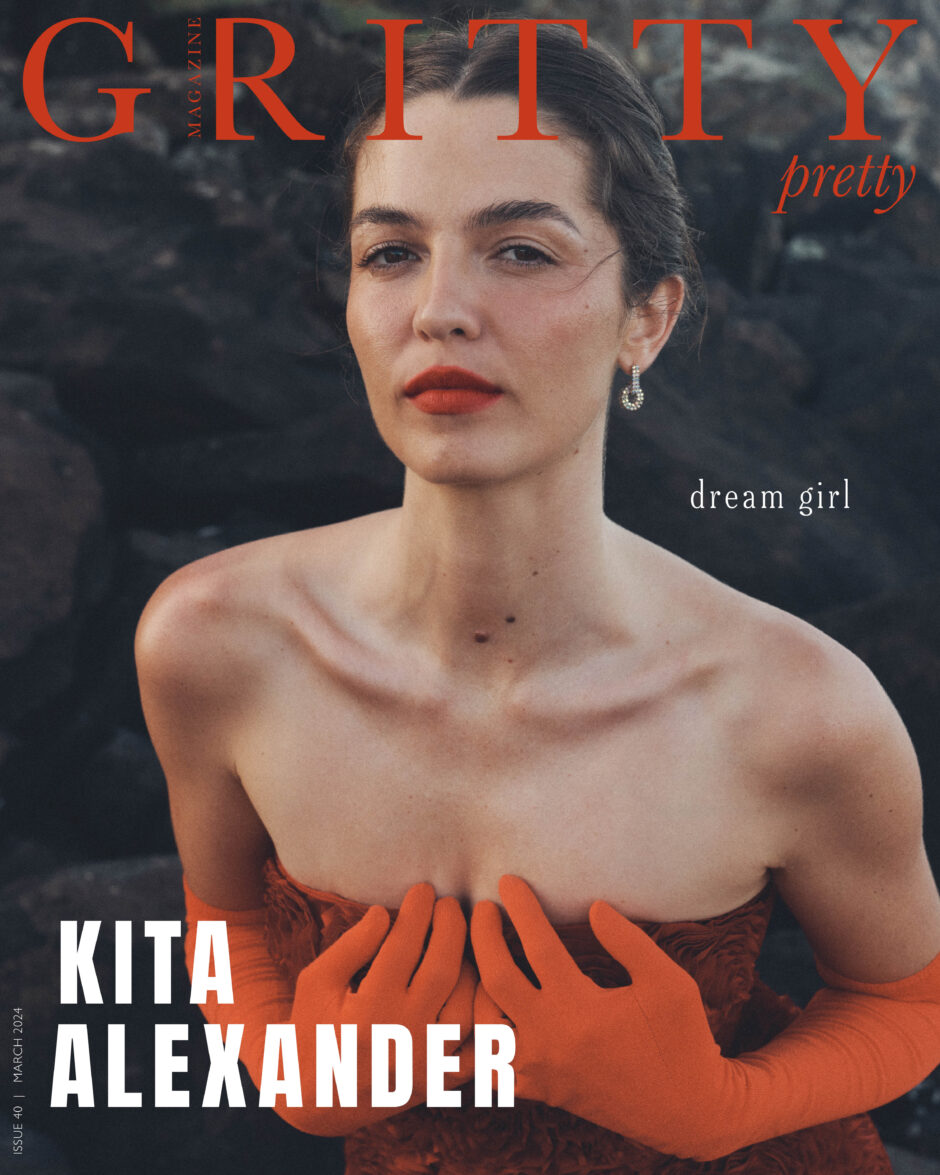
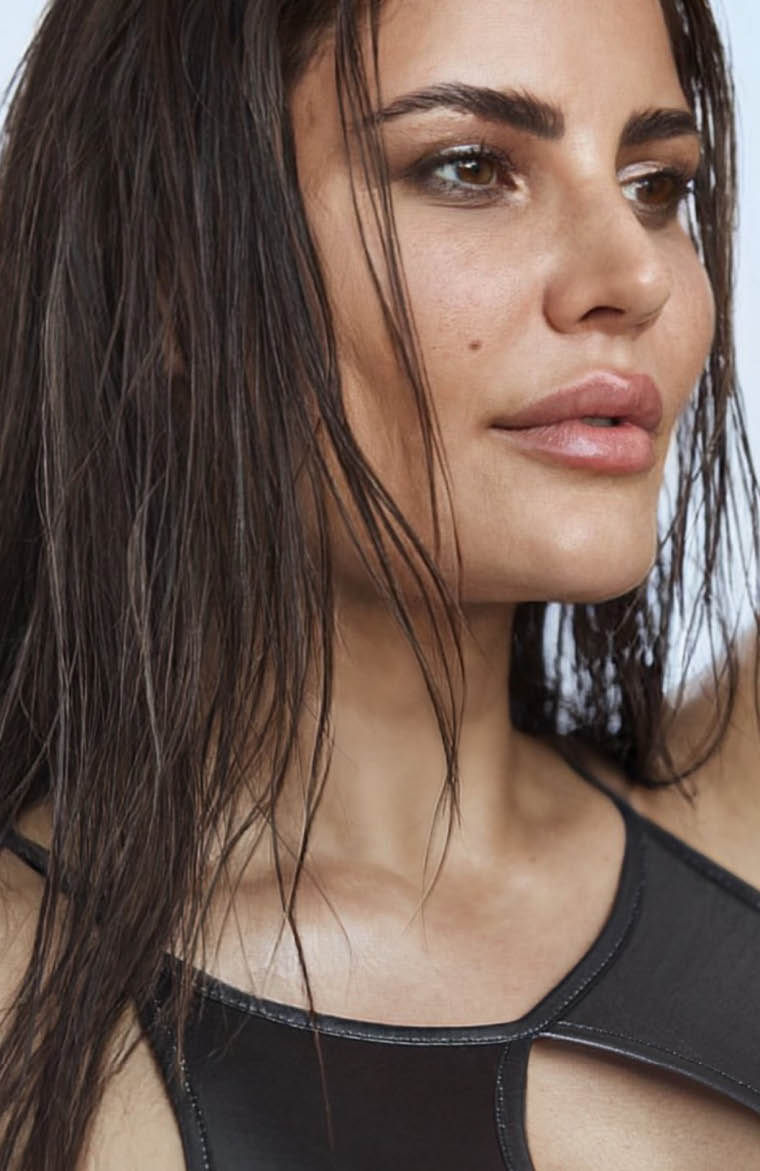
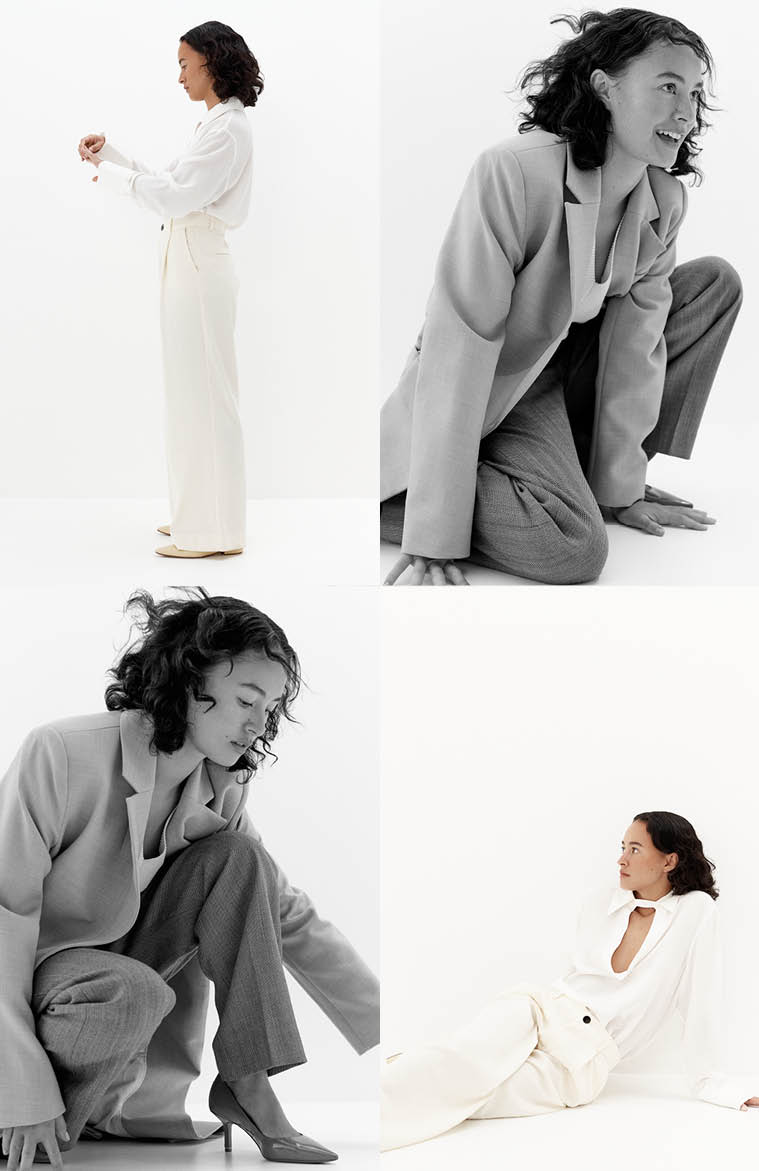
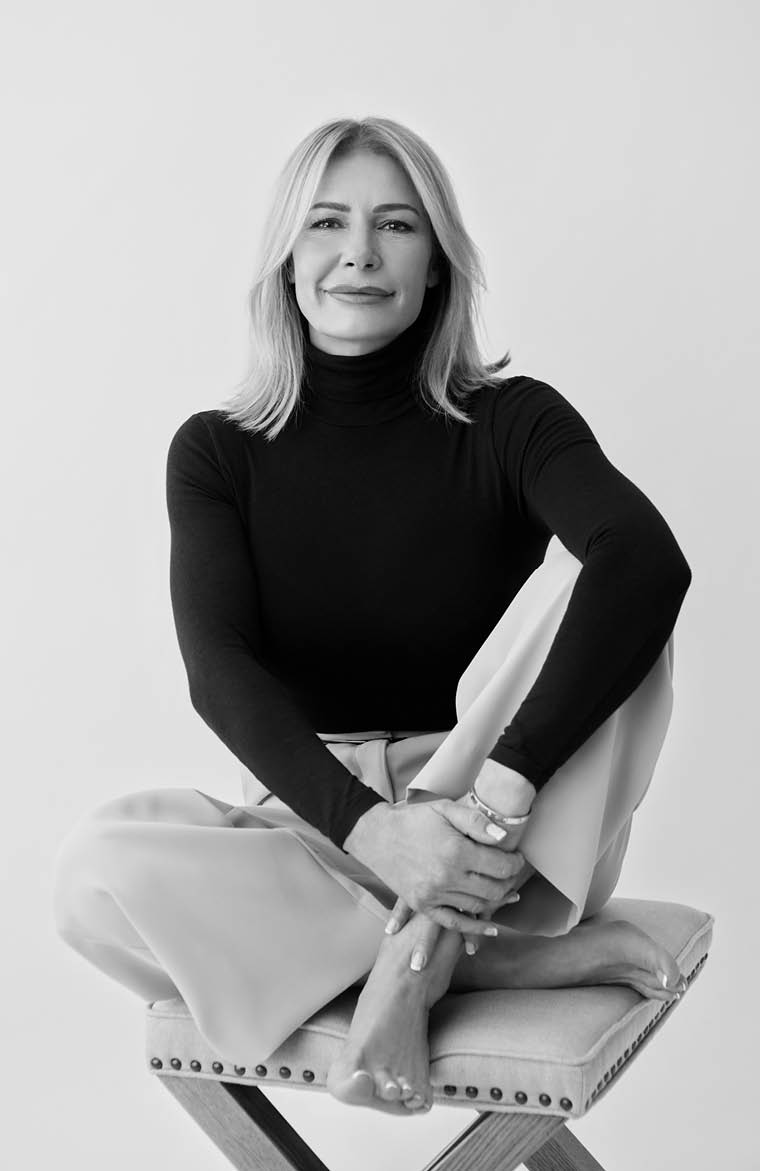
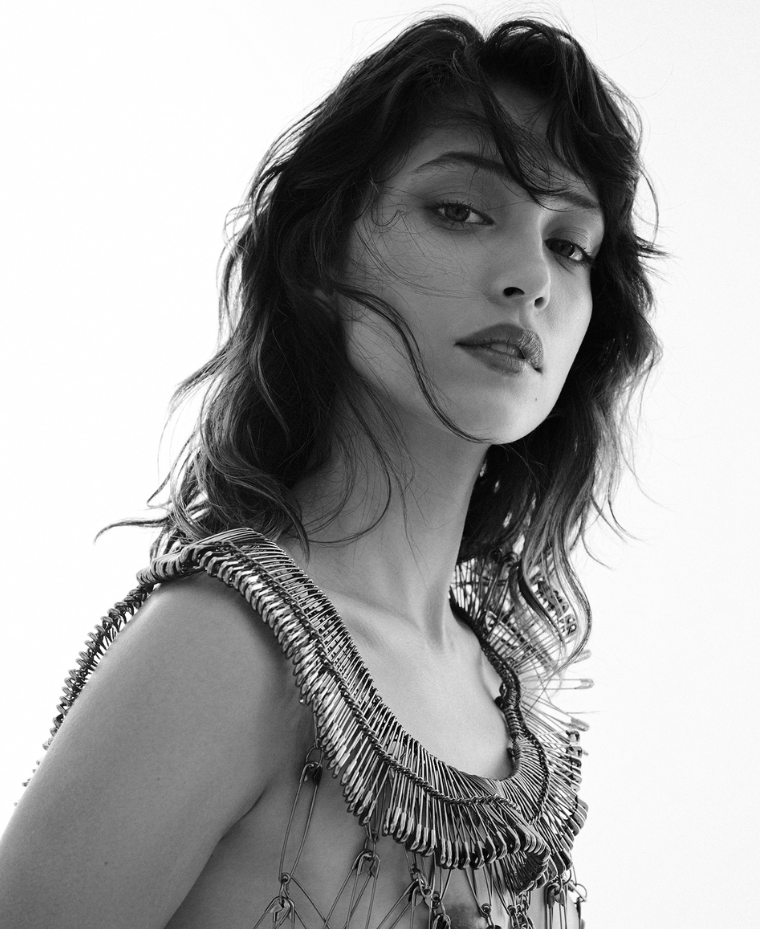
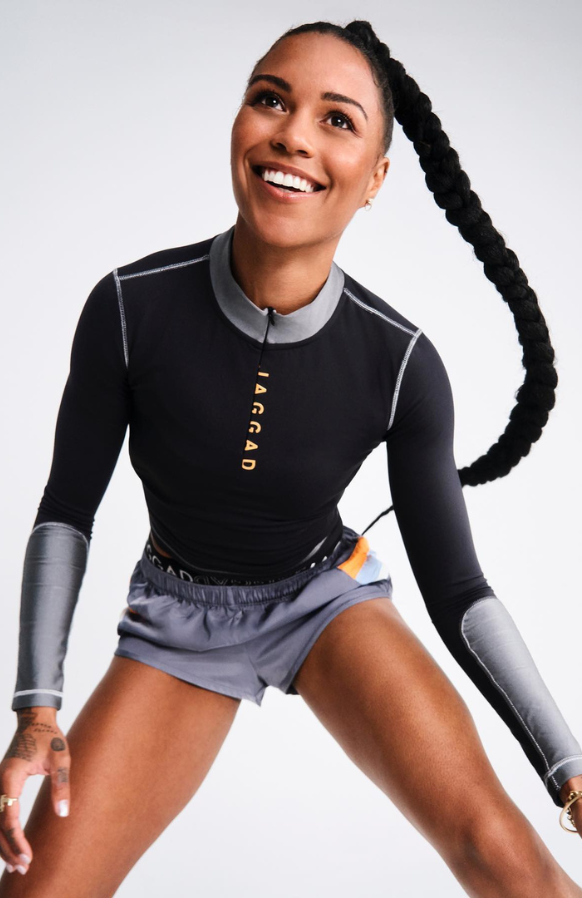

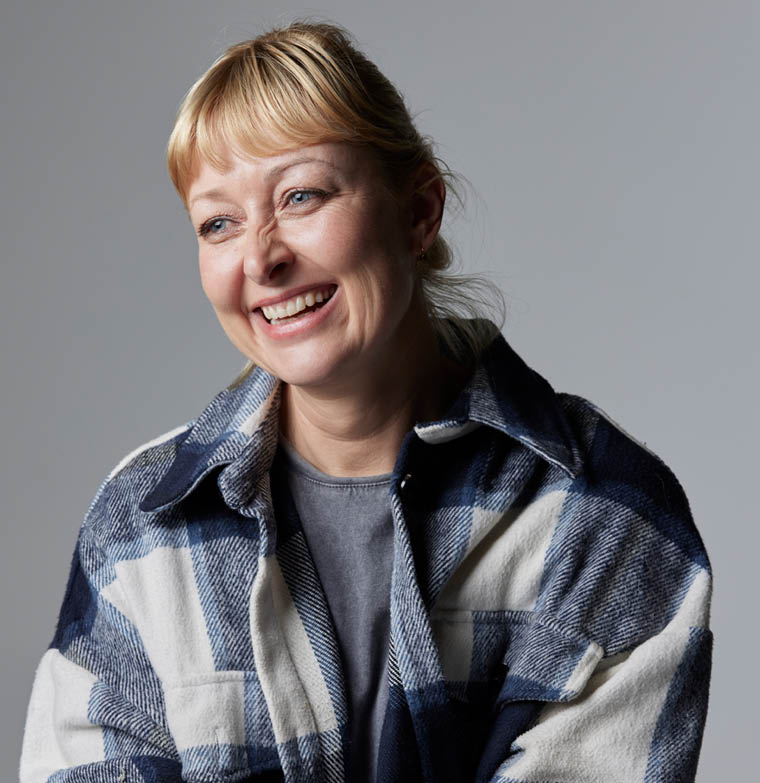
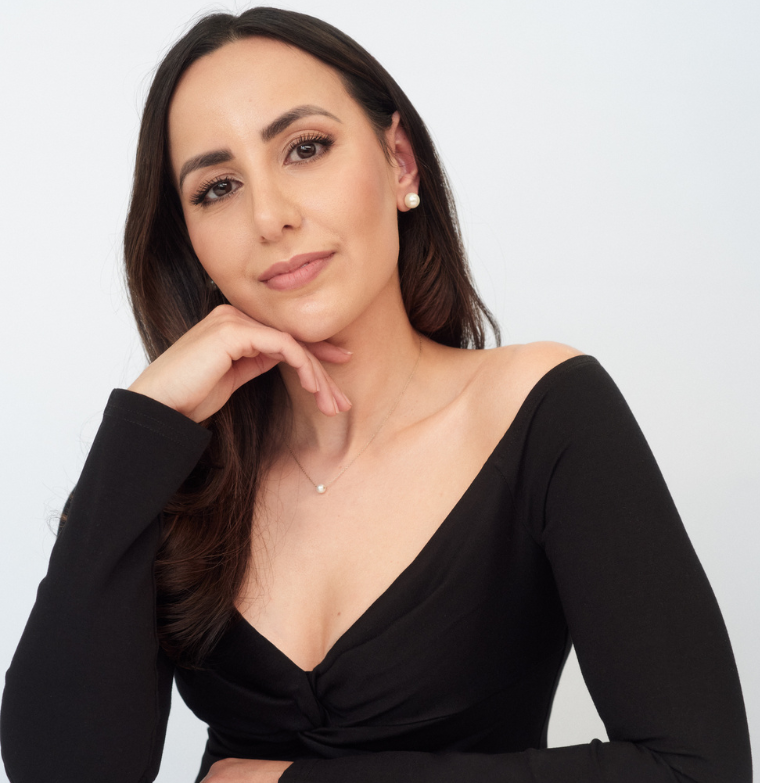
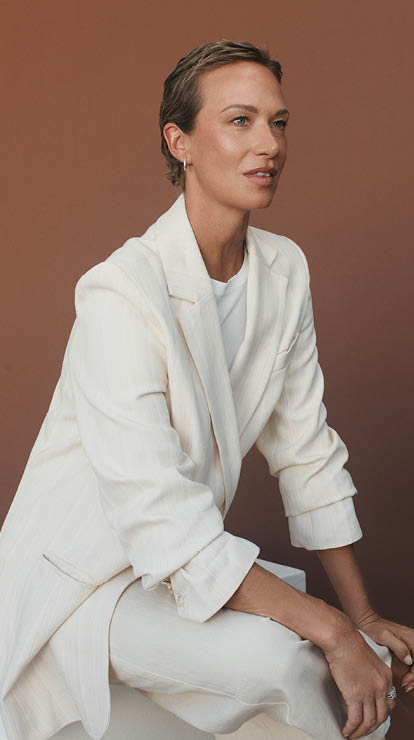

Comments